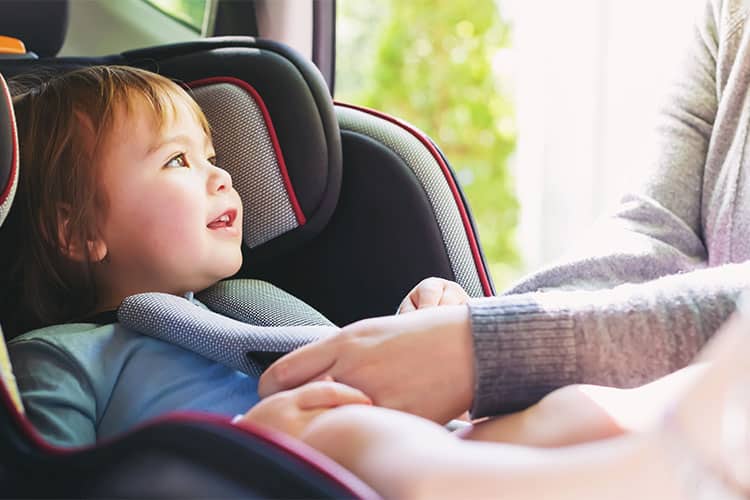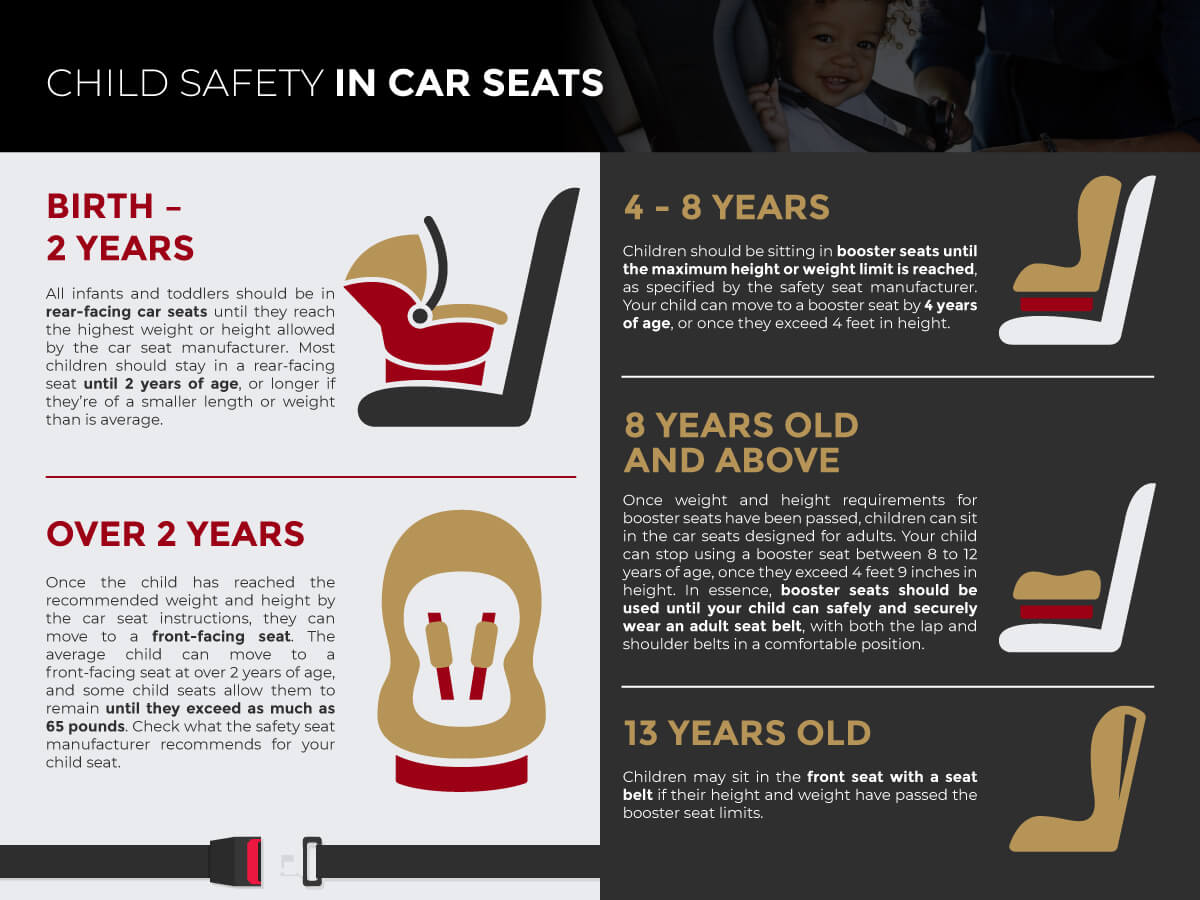
The American Academy of Pediatrics (AAP) has changed its recommendations regarding child safety seats last month. The updated recommendations may not have much impact on how some parents secure their children while riding in a vehicle. However, some parents may want to take specific notice of the recommendation to continue the use of rear-facing car seats for as long as possible.
The AAP previously recommended that all children stay in rear-facing car seats until they reached the age of 2 years. In a rear-facing child safety seat, the child’s head is much better supported during a car crash. When a child is in a front-facing car seat, there is a significant danger that the child’s head could be thrown forward causing neck, head, and spine injuries. However, the rear-facing car seat cradles the child’s neck, spine, and head. In addition, the car seat absorbs most of the force caused by the impact of a collision.
The recommendation that children remain in a rear-facing child safety seats until they reach the age of two years was based on a study that found lower risks of injury for children in rear-facing child safety seats. However, the original data was questioned and re-analyzed. The AAP concluded that there was not enough data to determine an age-specific designation for transitioning children into a front-facing child safety seats.
Therefore, the AAP has updated its original recommendations to remove the age restrictions for rear-facing child safety seats. It is now recommended that children ride in rear-facing car seats for as long as possible. Because many car seat manufacturers have created car seats that accommodate older toddlers who weigh up to forty pounds, it is possible for many children to continue to use rear-facing car seats after they turn two years old.
Parents should carefully read the manufacturer’s instructions regarding the height and weight limits. Once a child exceeds the height and weight limits for the car seat, a new car seat is required. However, science suggests that keeping your child in a rear-facing car seat until he or she exceeds the maximum weight or height limits for those rear-facing seats is the best way to protect your child during a car accident.

Texas seat belt laws require that all drivers and passengers wear a seat belt or use a safety seat when the car is in motion. For children, safety seat laws are based on the height, weight, and age of a child. A child must be secured in a safety seat system until the child reaches the age of eight years or exceeds a height of four feet and nine inches in Texas. However, experts recommend that all children should remain in the back seat of a vehicle until they are 13 years of age.
While there is not a Texas law that states a child must be in a rear-facing car seat until a specific age, state regulations do require that you follow all the manufacturer’s instructions for placement of the car seat in the vehicle. With the new AAP recommendations, it appears that the safest position for a child is in a rear-facing car seat until the child exceeds the maximum height and weight limits for a rear-facing seat. However, be sure to check the child passenger safety laws in your state.
The AAP currently recommends that children remain in rear-facing car seats until they exceed the maximum height or weight restrictions, regardless of the age of the child. Once a child exceeds the maximum height and weight restrictions for a rear-facing car seat, the child can be transitioned into a front-facing car seat with a harness. It is recommended that a child remains in a car seat until the child exceeds the maximum height and weight limits for a car seat.
Once a child transitions out of a car seat, a booster seat should be used until the child is at least four feet and nine inches tall. Children under 4’ 9” in height usually are not tall enough for the vehicle’s seat belts to fit properly. After a child transitions out of a booster seat, the child should always wear a lap belt and shoulder belt for optimal protection.
Being in a car accident is terrifying, especially with your child in the vehicle. When a child is injured in a car accident, several factors could have contributed to the injury. The crash itself is one factor. However, a defective car seat may also cause injuries in a car accident.
The NHTSA maintains a list of child seat recalls. Whenever you purchase a child safety seat, you should complete the registration form and return it to the manufacturer so that you are notified of any recalls for that car seat. You can also check the recall list periodically for your child’s car seat.
Determining the cause of your child’s injury after a car accident is important. You might have more than one cause of action if your child was injured while riding in a car seat. If the injuries were a result of product liability issues, you might have a claim against the car seat manufacturer in addition to the driver who caused the crash.
Contact the injury lawyers of Thompson Law for a free consultation to discuss your case.






Thompson Law charges NO FEES unless we obtain a settlement for your case. We have put over $1.9 billion in cash settlements into our clients’ pockets.
Contact us today for a free, no obligation consultation to discuss your accident, get answers to your questions, and understand your legal options. State law limits the time you have to file a claim after an injury accident, so call today.